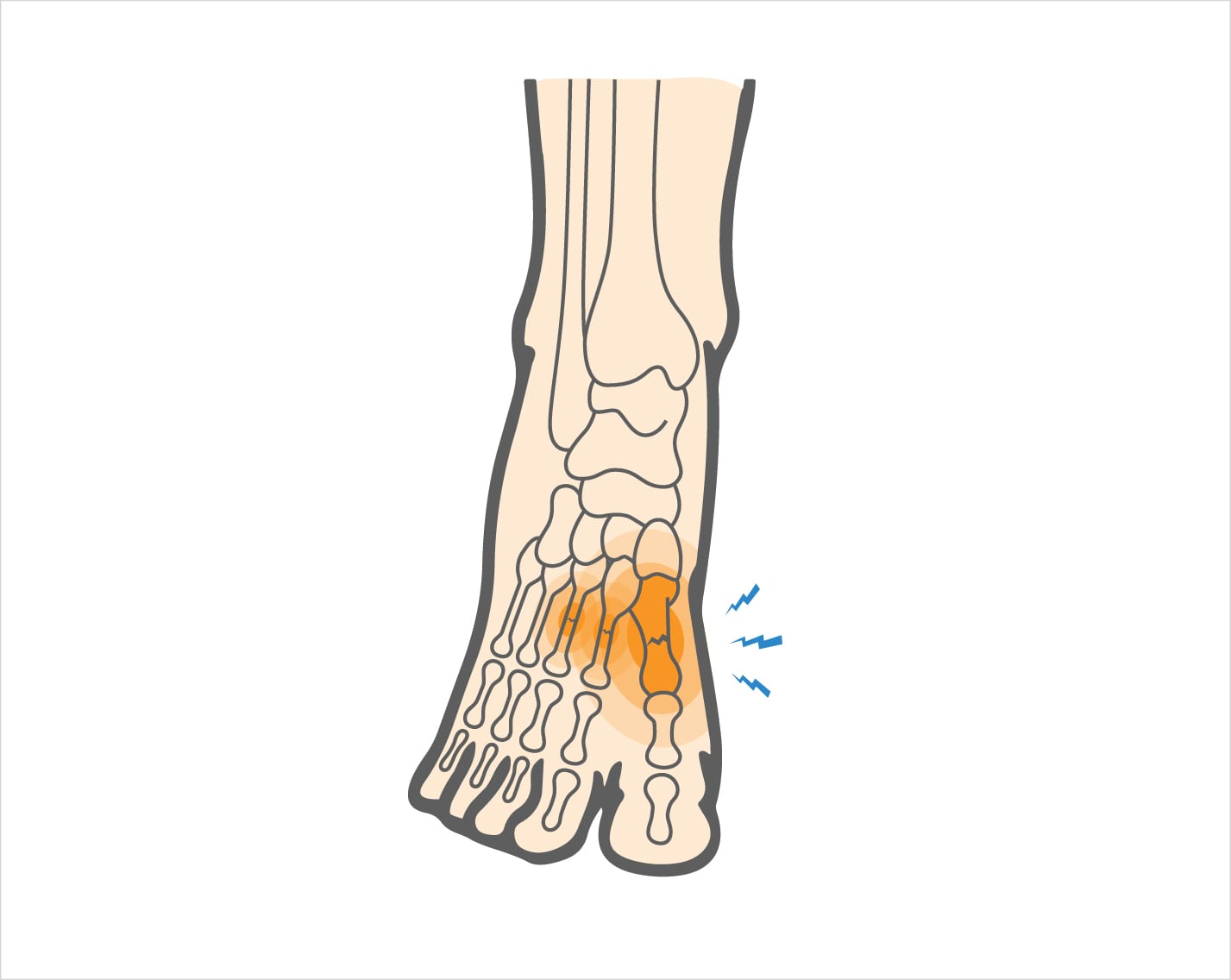The metatarsals are the five long bones in the middle of the foot. They connect the ankle to the toes. Metatarsal fractures are one of the most common injuries to the foot. These injuries usually occur as a result of a direct blow to the foot or when a person jumps or changes direction. Most isolated metatarsal fractures heal without surgery.
Metatarsal Fracture Causes, Symptoms & Treatment Options
The metatarsals are the five long bones in the middle of the foot. They connect the ankle to the toes. Metatarsal fractures are one of the most common injuries to the foot. These injuries usually occur as a result of a direct blow or when a person jumps or changes direction. Most isolated metatarsal fractures heal without surgery.
Overview
Overview

What causes Metatarsal Fracture?
Metatarsal fractures usually occur as a result of a direct blow to the foot such as when a heavy object lands on the foot or they may occur from a jumping or twisting injury
Metatarsal fractures are most common in these sports:
• Soccer
• Football
• Basketball
Symptoms
The most common symptoms of a metatarsal fracture are pain and swelling over the middle of the foot. Other common symptoms include difficulty walking and limping.
When to see a doctor
If you have sustained an injury to the foot and have pain and swelling of the foot, stop all activity and make an appointment with an orthopedic specialist. During your appointment, your doctor will ask you to recount what happened at the time of your injury. He/she will examine the foot for signs of a metatarsal fracture, such as tenderness, swelling, and bruising along the metatarsal bones.
In order to make a diagnosis, your doctor will order an x-ray to determine if you have a fracture.
Non-operative treatment
Usually, metatarsal fractures are treated conservatively. Your doctor will recommend:
• Applying ice and elevating your foot to reduce swelling and pain
• Using crutches if walking is painful
• Wearing a special boot or cast to immobilize your foot
• Physical therapy only after the bone has healed
Surgical Treatment
Surgery is usually not needed for an isolated metatarsal fracture. If you have fractured more than one metatarsal or if there is significant angulation or separation of the ends of the metatarsal bones then surgery may be indicated. This surgery usually involves repairing the bones with wires , screws or small plates.
Recovery
Metatarsal fractures usually heal in 6-8 weeks. Following a period of immobilization, physical therapy can be helpful in building strength and increasing range of motion. To stay active, sports like swimming and cycling may provide alternatives to running or other sports that could re-injure your foot. When resuming your normal activities, work with your doctor and physical therapist on a gradual build-up to your previous intensity levels.
GET BACK TO WHAT YOU LOVE. FASTER
Sources
https://orthoinfo.aaos.org/en/diseases–conditions/stress-fractures-of-the-foot-and-ankle/
https://medlineplus.gov/ency/patientinstructions/000553.htm
https://www.ahni.com/Specialties/Foot+and+Ankle/Articles/Common+Disorders/Metatarsal+Stress+Fracture.html
https://www.verywellfit.com/metatarsal-stress-fracture-causes-and-treatment-4065391

